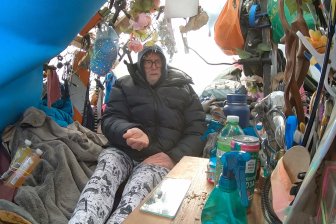What’s in a name? The growing debate over what we should (or shouldn’t) label U.S. President Donald Trump‘s controversial immigration order, which restricts people from seven Muslim-majority countries from entering the United States, continues to live on.

Since Trump signed the order putting a four-month hold on allowing refugees into the U.S. and barring travelers from Muslim-majority countries, the controversial move has widely been referred to as Trump’s “travel ban.” The majority of headlines published about the order, including those on Globalnews.ca, refer to it as a “travel ban.”
READ MORE: Donald Trump’s refugee ban brings despair, anxiety for families left in limbo
On social media, those who believe Trump is targeting Muslims directly shared their outrage using the hashtag #MuslimBan.
Trump has denied the order is a ban on Muslims, insisting the U.S. is adopting “extreme vetting” measures.
WATCH: Donald Trump says new order on refugees is not a Muslim ban

But he has has referred to the order as a “ban” on social media.
But, on Tuesday, White House press secretary Sean Spicer appeared determined to put a stop to the use of the term “travel ban” during a routine briefing with reporters at the White House.
READ MORE: A fact check on Donald Trump, Sean Spicer’s comments on travel ban
“First of all, it’s not a travel ban,” Spicer said in response to one journalist.
“What it is is to make sure that the people who are coming in are vetted properly, from seven countries identified by the Obama administration. A ban would mean people can’t get in.”
WATCH: Sean Spicer says U.S. immigration order is not a “travel ban”

Spicer repeatedly shut down the use of the term “travel ban” during the briefing, adding if people use words like “travel ban” it misrepresents what the order actually means.
Homeland Security Secretary John Kelly also said the order is “not a travel ban” but a “temporary pause that allows us to better review the existing refugee and visa-vetting system.”
On Wednesday, while many continued to argue over whether or not the so-called travel ban was indeed a ban, Trump tweeted, this time telling the world to call the order whatever they please.
So what is it?
Here are the specifics: The executive order signed Friday does not specifically say Muslims can’t visit the U.S., but it does create a temporary total travel ban for those with passports from Iran, Iraq, Libya, Somalia, Sudan, Syria and Yemen. Trump’s order also bans refugees from Syria indefinitely, pending a review of the application process.
The order also bars the entry of any refugee awaiting resettlement in the U.S. and puts a four-month hold on allowing refugees into the U.S.
After some initial confusion, the government confirmed Canadians with dual citizenship from any of the affected countries will not be turned away at the border.
READ MORE: Hundreds of American diplomats sign dissent memo over Donald Trump’s travel ban
Some have pointed out that former New York mayor Rudy Giuliani told Fox News that Trump wanted a so-called “Muslim Ban” and asked Giuliani for advice on “the right way to do it legally.”
When Fox News host Jeanine Pirro asked how Trump decided which seven countries would be included in the ban he replied:
– With files from The Associated Press




Comments